I Got My Mech Fix From A Pokémon Clone On The Neo Geo Pocket Color Instead Of Armored Core VI And I Don't Regret It!
By ZombiePie 5 Comments
The Neo Geo Pocket Color Is A Cool Thing (And So Is/Was Portable Gaming)
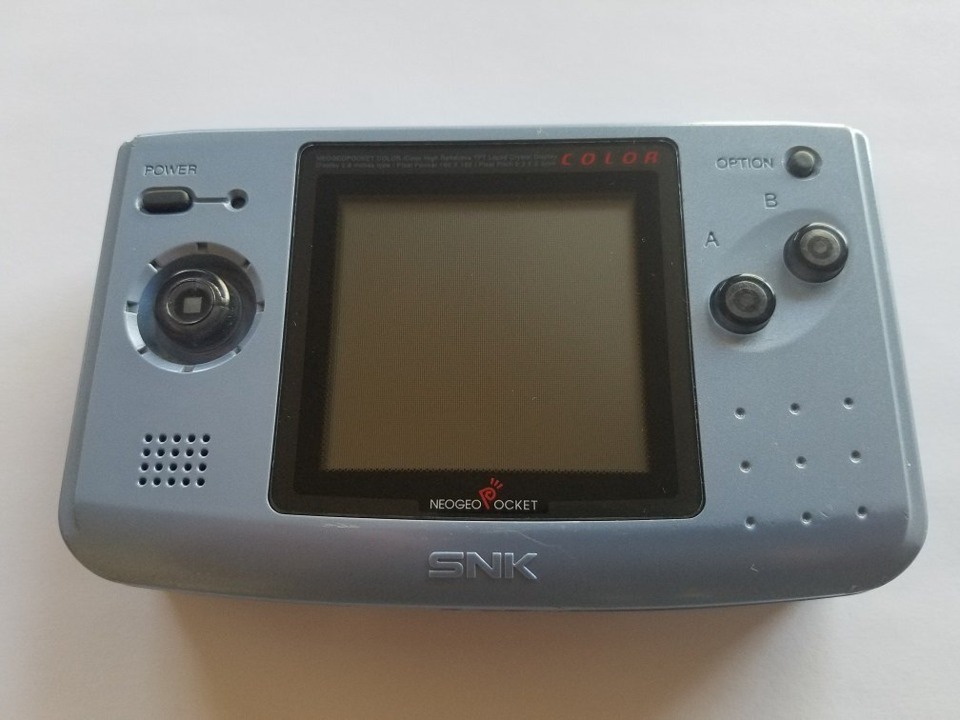
We live in a new era of gaming where dedicated handhelds are all but dead, with the Switch, smartphones, and portable PCs taking up their mantle. What sometimes gets lost with time is how handhelds and the games developed for them had their own unique style and feel to take advantage of the preferred setting in which most handhelds were used, which was during quick breaks between work sessions or while on the go and outside of home entertainment settings. The traditional handheld games of yesteryear could be things you could pick up and play for a few hours and then walk away from for days and not feel like you were completely lost when you eventually returned to them. That's something that is critically missing about today's "portable" games, and partly why I'm unconvinced the Switch is a proper replacement for handhelds and why I haven't taken the plunge on the Steam Deck. When I'm in a mobile or outdoor setting and want to kill some time, I'm usually not in the mood to continue a single-player game I put on stasis a few hours back, nor am I interested in starting a console-lite experience that still requires my undying attention every second, which is how most mobile or gacha games operate. Speaking of mobile games, following updates, balance patches, and story expansions puts them on par with console experiences. With the Switch, and I know I get people in my mentions angry at me when I say this, but playing undocked feels like a scam. I do not enjoy playing Switch games meant for home entertainment set-ups on a paltry screen with a questionable refresh rate and a lack of real estate to display most game UIs legibly. And with the Steam Deck, I don't know how some of you are getting away with holding that thing for more than two hours and not feeling like your wrists are about to turn to dust. I miss devices like the Game Boy, PSP, Nintendo DS, 3DS, and Neo Geo Pocket Color. One of those things might not seem like the others, but let me explain, and you'll understand where I'm coming from.
In 1996, Nintendo unleashed a video game and multimedia effort called Pocket Monsters, and the world has never been the same since. The franchise/brand has come to define and set worldwide standards for video games and television media marketed for children. At its core is a role-playing game, initially inspired by Dragon Quest II, mixed with the Japanese approach to pet culture. In Pokémon's shadow came hundreds of imitators and knock-offs that are too many to list or annotate on any given blog or list. Nonetheless, what often gets forgotten is how Pokémon Red/Blue/Yellow carried the Game Boy for an additional two to three years before Nintendo transitioned its handheld division to the Game Boy Color. And even then, Red/Blue/Yellow still couldn't dethrone Tetris as the best-selling game on the device, and Nintendo classified it as a "surprise success" at best. Equally funny is that the original Game Boy got mixed reviews from most hardware and software publications when it first came out. Many publications, like EGM, advised people to buy Sega's Game Gear or NEC's TurboExpress instead of the OG Game Boy, citing the device's lack of a backlight, inferior graphics, bulky design, and limited control inputs as being significant deal-breakers. But none of that mattered because it had Tetris.
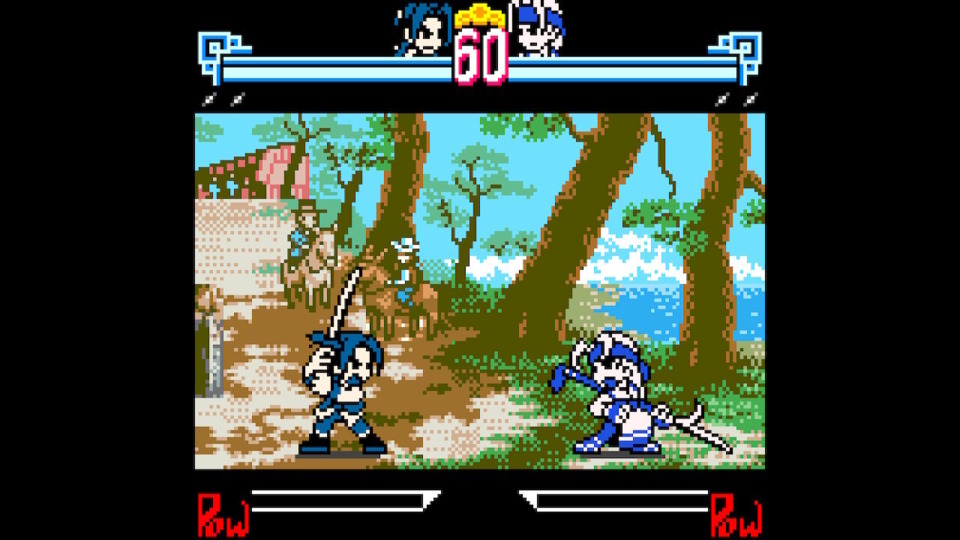
When the Game Boy Color came out, while it launched with a decent enough horde of software, one of its key selling points was its backward compatibility with all existing Game Boy software. This feature allowed it to launch with a starting library no competitor could match in the handheld market. With the fifth generation of video game hardware, Sega's Game Gear and Atari's Lynx were all but out of the picture. Sega would attempt to remain in the handheld arena with their ill-fated Nomad device, but it failed. If you were patient and lived in Japan, 1999 would mark the release of the Wonderswan, the only pre-PSP handheld to make Nintendo sweat as it competed aggressively on its home turf and had Gunpei Yokoi, the former head of Nintendo's handheld division, spearheading it. What often needs to be remembered is the OTHER competitor to the Game Boy Color, the Neo Geo Pocket, and its reboot, the Neo Geo Pocket Color. I can hardly blame you if this is a platform you hadn't heard of until now because non-Game Boy or DS handheld alternatives out in the wild, pre-PSP, were and are not easy to come by. Despite starting with a launch portfolio of fourteen games, sporting a forty-hour battery life, and featuring an incredibly satisfying arcade-style "clicky stick" joystick, the Neo Geo Pocket Color lacked retail support and launched when SNK was in its late 90s death throes.
The Neo Geo Pocket Color did not have a chance, especially when Nintendo had already secured a virtual monopoly in handheld gaming when Pokémon Gold/Silver came out. This fate for the device is unfortunate because the Neo Geo Pocket Color is an incredible piece of hardware with some true gems worth checking out. I have never touched or seen a Game Gear or Lynx, but I did have the honor of playing SNK vs. Capcom: The Match of the Millennium on a Neo Geo Pocket Color, thanks to a neighborhood friend of mine. The microswitched analog stick was perfect for the bevy of MVS and AES SNK arcade ports that were released on the device and made it one of the few handhelds that emulated the fighting game experience without the end product sucking complete shit. Need I remind you of the Mortal Kombat Game Boy game? Other SNK properties like Samurai Shodown and Metal Slug have NGPC ports and are total blasts. Also, not wanting to give its competition ammunition, Sega made a Sonic Neo Geo Pocket Color game, and it's pretty much on par with the first few Sonic Advance games. And then there's the platform's attempt at a Pokémon stand-in, Biomotor Unitron, which is by no means a failure or without merits.
Biomotor Unitron Is What Pokémon Would Be If It Was Way More Honest About Its Dragon Quest And CRPG Roots
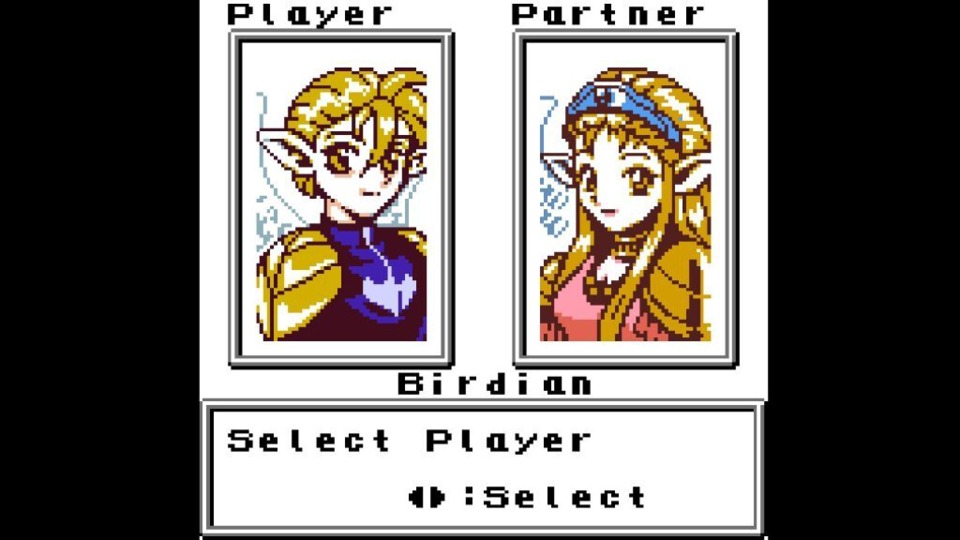
SNK jumped into the handheld gaming field in 1999, while Nintendo maintained a complete grip on the market. Though it came out a solid year before Pokémon Silver/Gold, children of the late 90s and early 2000s were already amid "Pokémon Fever." Thus, it made sense for SNK to fund a game that allowed their fledgling handheld to claim it had "one of those." Third-party developers were already hard to come by for the Neo Geo Pocket Color. Still, SNK did have its share of stalwarts in Japan willing to work with them thanks to their MVS and AES work, and therein comes developer Yumekobo Co., Ltd., previously known as Aicom Corporation. For those familiar with second and third-tier NES and TurboGrafx-16 games, Aicom is commonly associated with having zero consistency with its development quality. On the one hand, they made Polestar, Viewpoint, and Blazing Star. On the other hand, they also made that godawful Golgo 13 NES game (i.e., The Mafat Conspiracy), the TG-16 home port of P-47 Thunderbolt: The Freedom Fighter, and Vice: Project Doom. However, by the time the fifth generation of consoles and handhelds came around, they tied themselves to SNK at the worst possible time a developer could do so. SNK's arcade fortunes were already regressing, their home console efforts were going nowhere, and they were bleeding money on the Neo Geo Pocket Color. Thus, when SNK went bankrupt, so did they.
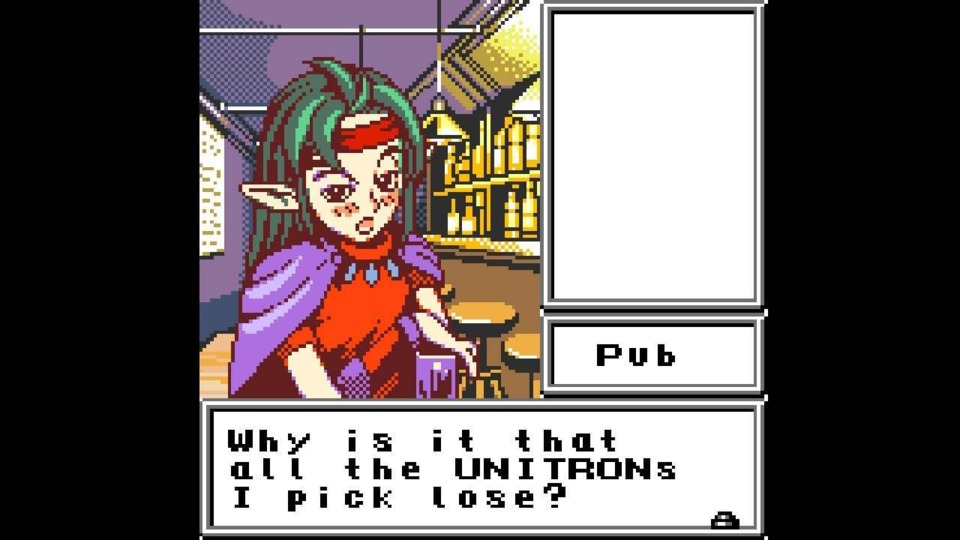
However, one of the odd things to come from the partnership between SNK and Yumekobo, beyond a half dozen amazing handheld fighting games, was Biomotor Unitron, a Pokémon-like that also saw fit to try its hand at traditional CRPG tropes. Biomotor Unitron and Pokémon have light RPG mechanics, dueling other monsters or creatures as the focal point of combat, sprite-based navigable overworlds, and collecting new abilities or things as a core mechanic. There are rock-paper-scissor weaknesses, and Biomotor Unitron's battle screen feels directly lifted from Pokémon Red/Blue. However, Biomotor Unitron makes some significant deviations from the Pokémon formula that most Pokémon-likes rarely do. First, it embraces Wizardry-lite dungeon crawling with dungeons that are procedurally generated, which makes grinding for resources and experience points differ between game sessions and playthroughs. It might get ever so slightly annoying later as you go, but having dungeons throw different floorplans and mazes at you every time you enter them spices things up and adds some variety. Likewise, you are only ever in control of one robot avatar in combat, and your combat options are limited to two to three choices, discounting items. The way Yumekobo adds differentiation with such a limited combat system is through a novel and in-depth kitbashing mechanic. Unlocking new abilities stems not from the simple process of gaining new levels but from combining different robot parts with others and seeing what emerges from your experiments. The game provides you with an in-game list of abilities and robot parts, and if you are smart enough, you can deduce how to unlock things based on your prior mechanical ventures and gaps in your records.

The first example of Biomotor Unitron being far more honest about its RPG roots stems from these collection and item-refining-based mechanics. To allow players to see stat growth better or the benefits of these sub-systems, Biomotor Unitron opts for a classic paper doll inventory system wherein you bolt different body parts onto your mech's opposing arms, legs, and head. The story's structure also resembles a compromise between classic CRPGs and the kid-to-tween demographic courted by Pokémon. The story plays out entirely in a single city or hub, like the early Wizardry or Diablo games, and as you progress in the game, different NPCs will unlock, and your interactions with them will depend on your actions in the story. You pilot a single mech suit when tackling arena fights or exploring the surrounding dungeons, and your pilot is one of many different races, with male and female options as well. And though superficial in the long run, your initial choice impacts your starting stats and elemental affinities. For example, I opted for a mermaid man in a sailor outfit who was doubly effective against fire-type enemies. To progress the story, you must opt into a series of arena tournament battles that pit your mech suit against a gauntlet of boss battles. Predictably, the accompanying dungeons near the hub world provide drops for items and raw materials associated with different stages of the arena and the affinities of the bosses therein.
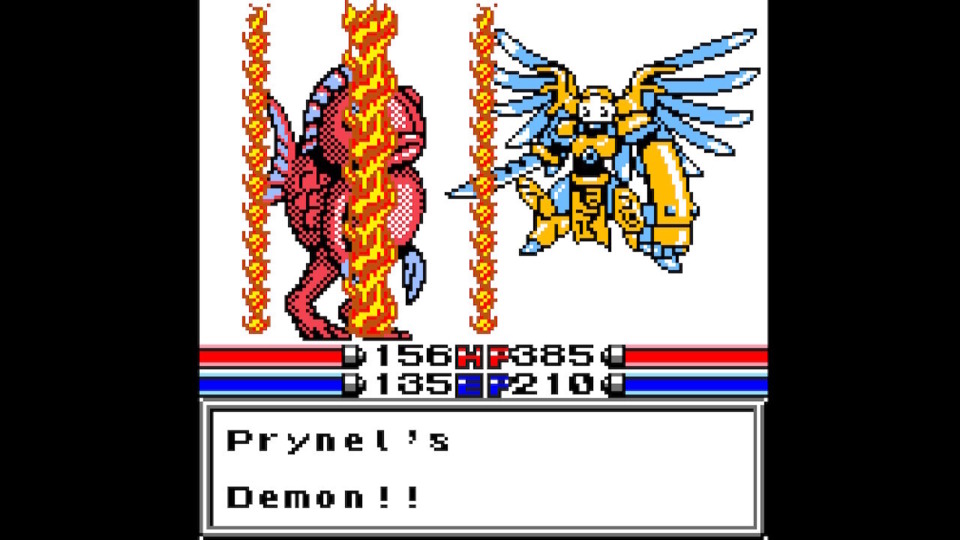
There are four dungeons, each with an elemental affinity to which you must pay attention. Similar to Pokémon, the penalties for failure are minimal, and you are actively encouraged to check out different evolutionary branches for your mech suit, as most, if not all, will assist in at least one boss rush or dungeon. Here's the one thing that Biomotor Unitron has Pokémon beat: the speed at which you can respond to changes in circumstance. In Pokémon, when you move from one gym or environment to the next, the changes of circumstances can force you to opt into hours worth of grinding. First, you need to catch new sets of Pokémon that can handle new elemental proficiencies and weaknesses. Next, you'll need to level them up to deal with their upcoming foes by unlocking their best abilities. In Biomotor Unitron, when you figure out the gimmick for a new environment or set of bosses, even if they off you, being able to swap out an ineffective part for a new one is pretty seamless and can be done on the fly, provided you have the appropriate materials. It's not an entirely painless affair, considering the random drops feel even more random thanks to the procedurally generated nature of the dungeons, and refining new parts can only be done in a single location. Nevertheless, it was a faster process than the hustle-grind in the Pokémon games that were contemporary to Biomotor Unitron.
Biomotor Unitron Is Far Breezier Than Pokémon, Which Is Its Best Attribute
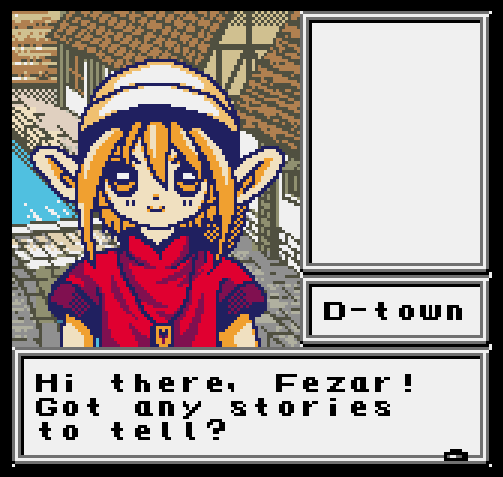
I played Biomotor Unitron with Giant Bomb users ArbitraryWater and JeffRud, the latter of which called it a "video game shoggoth." It is a heaping mass of disparate parts, and it's easy to see where Yumekobo pulled its references as you play it. The kitbashing part-swapping nature of the robot means your in-game levels are less critical than they are in most RPGs, which is a very Wizardry IV: The Return of Werdna approach to character progression. However, Biomotor Unitorn is far more generous to its players, which shows its Dragon Quest I and II spirit. The game also employs CRPG-inspired "Gear Check" bosses that immediately bash you into oblivion when you least expect it if you have not planned accordingly. However, with most bosses tied to specific dungeons, you have more than one way to opt into the in-game clues on how to beat them. That is not to say this game is challenging, as I was able to beat the game in about nine hours and can count on one hand the number of times I got a total KO during combat. The only real challenge comes if you take it upon yourself to discover everything in the game and refine or craft every discoverable part or ability. However, if you are like me and wish to see what Biomotor Unitron's best shot is, be it its anime sprites and visuals or Skinner Box mechanical trappings, you can blast through it, see those parts, and feel good about your investment in less than ten hours. That's right, Yumekobo made their Pokémon-like a ten-hour experience, and it is a goddamn revelation.
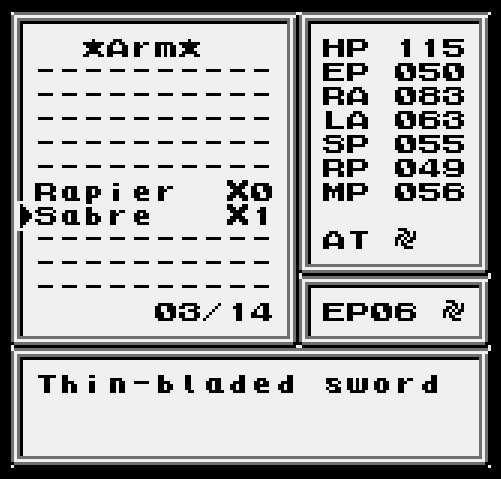
The fact you are only building a single mech suit is both a blessing and a curse. The blessing of this design choice is that it opts you out of needing to scrutinize optimal party compositions and lineups. The primary curse stems from the impact on variety when you engage with the longer dungeon spelunking sessions and see the same two moves for over twenty minutes. As I said, your mech's attacks are limited to only two options as they are connected to their two arms. And like my previous point, this too has pros and cons. There's minimal downtime in Biomotor Unitron, as you almost always know which attack is better and rarely need to consider buffs and debuffs. In this game, you should constantly attack and not stop for nothing. Yes, this makes the combat simpler, and that might not be what some of you want, but with the game having a bunch of wild and bananas Neo Geo Pocket Color art to share, being able to run through combat quickly is a key. When I say this game has "good art," I mean it. One major positive about the art is that when you initiate the arena fights and battle against opposing mech bosses, you can identify new impressive robot parts and their strengths and weaknesses based on how they perform and animate in combat. The hub world features a diverse assortment of fantasy stand-bys, but the enemies you encounter in the wild are certainly "something." My jaw dropped when I discovered one of the enemies was called "Pengun," and it was nothing more than a penguin carrying a Glock aimed at the screen.

There's not much wandering around in worlds, and the game's primary local, its hub world, is nothing more than an abstraction of a menu-based inventory system. There are no long treks around a town to find a Pokecenter or market. Instead, you shift left or right to click on NPCs and locate vendors, and when you have exhausted all of your options, you know it is time to jump into combat. Biomotor Unitron throws you into your first tournament the minute you talk to the person in charge of the arena. The tournaments and going up the arena's ranks are the story's focal point for the first half of the game. If you explore the dungeons, you'll find that the game's power curve places roadblocks that require you to reinvest time into discovering the next level of robot parts before going further. The same goes for the arena combat. Meeting all the NPCs and starting a new batch of bosses in the arena is occasionally slower than I would like. Still, I appreciated how there was no mystery about what I needed to do or where I needed to go. There are six tournaments, and the game gently encourages you to explore the dungeons between tournaments to nab new resources and boost your mech's base stats. When you finish the starting tournaments, you initiate the game's ending, which prompts you to defeat four legendary god-like entities found at the end points of each dungeon to beat the ultimate evil plaguing the world. It's simple, but with plenty of bizarre visuals and robot parts to discover, the game's snappiness ensures you never tire of its rigamarole.

I'm getting older with time. I know this is a crazy idea, but I have finally come to terms with the notion that I will not be the "chosen one" to beat Father Time. With this admission in mind, the grind-based feedback loops of Pokémon do not hold as much weight on me as they once did. The franchise, even with its new accommodations like the Wild Area in Sword and Shield, expects a level of free time I can only partially commit to for a handful of weeks or a few months at best, and that still only results in me experiencing what feels like the tip of the iceberg. Don't get me wrong. I played a ton of Generations I through IV of the Pokémon series, but that was because the multimedia fever got me good, and I didn't know any better. With hindsight, I'm prepared to admit that Dragon Warriors Monsters is mechanically better designed than Silver and Gold, and Biomotor Unitron respects your time more than 90% of the series. I'm old enough to remember how the first two Dragon Quest games ended south of twenty hours, and I miss that. So, getting the same mechanical thrills of a classic-era Pokémon game in less than twenty hours certainly speaks to me.
But That's Not To Say It Is Free From Some Rough Edges
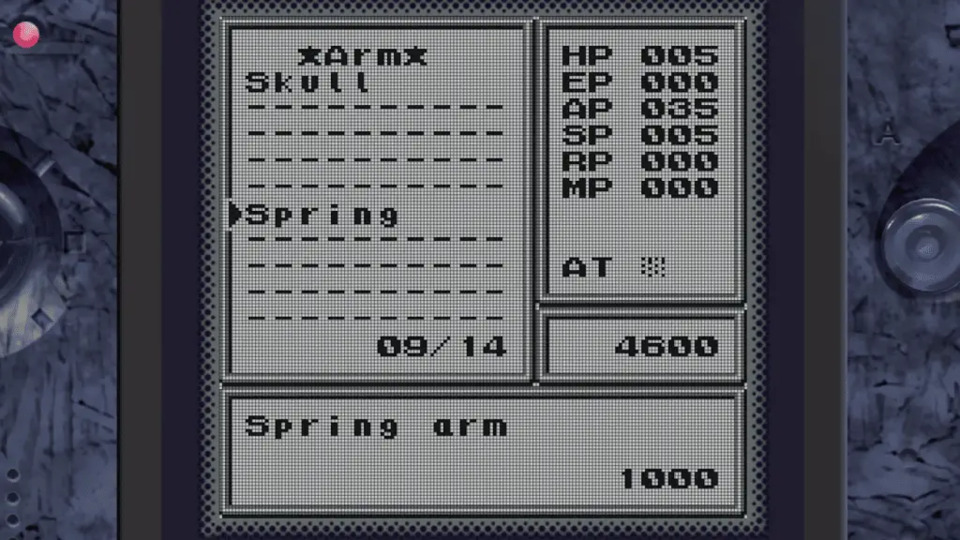
There's a cost to Biomotor Unitron's more straightforward approach to the Pokémon formula, and that is its lack of depth, especially by the standards of Silver and Gold. The dungeons might have randomization to spice things up, but inevitably, there's a basic template of "this is the ice area, this is the fire area, this is the earth area, etc." that is unmistakable. I would also point out that the legibility of its symbols and visual indicators, especially those for its elements and affinities, is poor, and there were times when I felt as if I was punting in the dark when trying out a new weapon because I didn't know what its icon translated to. The item list that the game encourages you to review also has legibility issues, but the real problem is the game's repetition. With its heart essentially in the CRPG arena circa the 90s, the steps it wants you to follow are:
- Grind in a dungeon.
- Buy new parts from a merchant.
- Kitbash new parts in a menu-based garage.
- Talk to NPCs.
- Buy healing items.
- Fight in an arena.
- Repeat until you get to the end.
Again, this structure is what Pokémon expects you to do, but with monsters and overworld-based exploration. Nonetheless, I was disappointed at the lack of authentic variability between the mech parts and the animations for the unique abilities and attacks, and with this game limiting you to two attacks per battle, cool animations would have gone a long way.
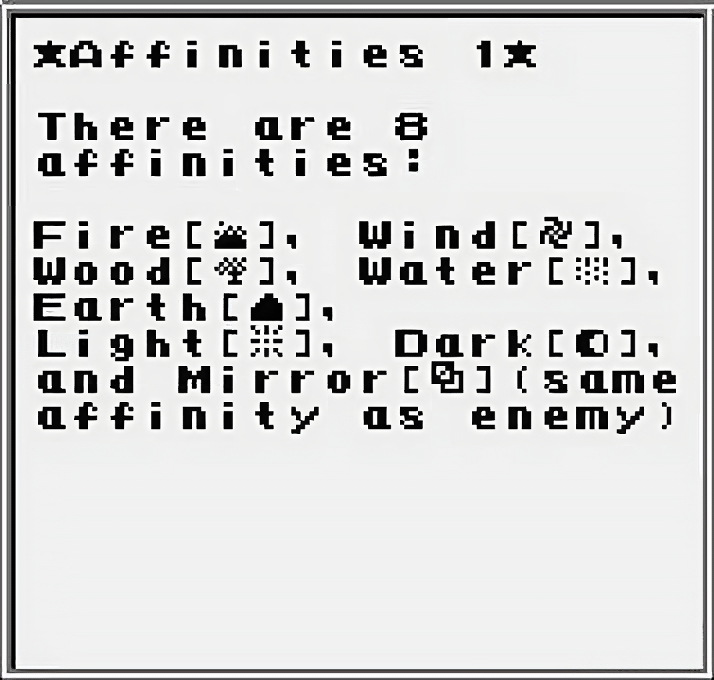
And the Wizardry and Rogue DNA in the game has some stark downsides as well. Biomotor Unitron is a crafting-based Pokémon-adjacent experience, and while it does fudge its numbers in your favor a bit, it's less than you'd like. There was a point in my playthrough when I knew what materials I needed to assemble a new robot arm to make the next arena gauntlet a breeze. Still, the randomized drops were not in my favor for a whole day, and I spent HOURS trying to get one unit of Platinum and two units of Tungsten. Some merchants can provide these resources, but bizarrely, the one that has the rarest minerals was programmed to have a randomized inventory. When I could not get the Random Number Goddess on my side in the dungeons, I found myself bopping in and out of the hub world and overworld six or seven times until finally, the gnome that sold rare-earth minerals had the piddly single unit of Mithril I needed. The good news is that when the drops do work in your favor, finding a winning combination of parts is seamless, but that results in a different problem. The power curve in Biomotor Unitron is non-existent if you do even surface-level research or investment in its mechanics. At one point, I had one shield that blocked virtually all elemental damage at 85% and an attack that wasted most random encounters in a single move. Until the final bosses, the game simply had nothing up its sleeve to throw me for a loop for upwards of one-third of my playtime.
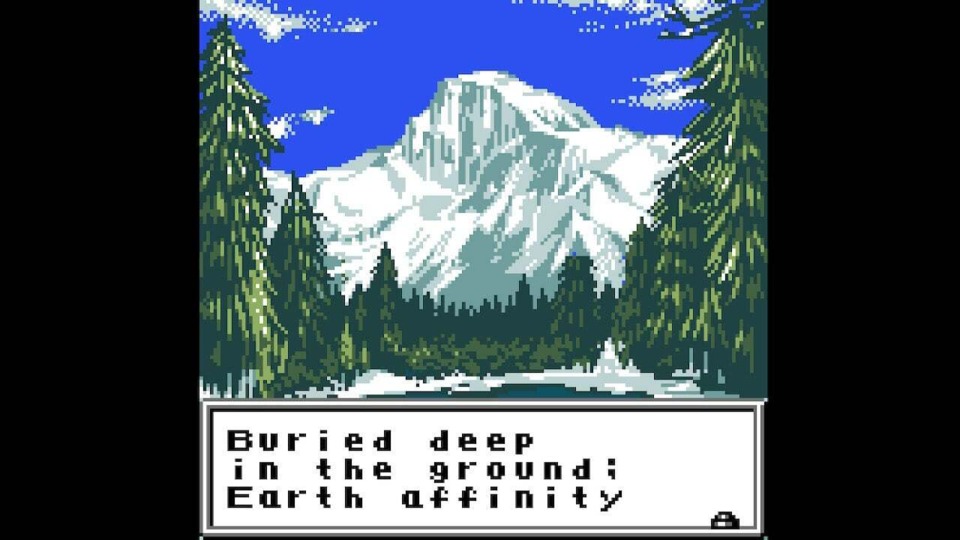
While I loved it for the most part, there's one part about the game's kitbashing gameplay that I am mixed about. The issue stems from Biomotor Unitron's use of evolutionary deadends. There are a lot of items, raw materials, and robot parts for you to play around with, but only some combinations are helpful. Whether you are attempting to bash together two things with conflicting affinities or opposing animal robot types, Biomotor Unitron has the gall to present you with weak final evolutions or only slight improvements of what you started with. I respect the game trying to subvert the player's expectation that every evolution or weapon combination should be good. Still, when you consider how its drops work or that there is a failure rate with any kitbash attempt, this design choice gets incredibly annoying. So much so I recommend you consult a guide on what you should make. Even when accepted at face value, there are a lot of weapons that end up being palette swaps of ones you have already encountered. If you play the game blindly and authentically, taking the time to scour dungeons for minutes upon end and having that hard work result in a palette swap, in my case, getting a spiked fist that did 40 damage when I already had a spiked fist from an other kitbash attempt with different parts that also did 40 damage, is undeniably disagreeable.
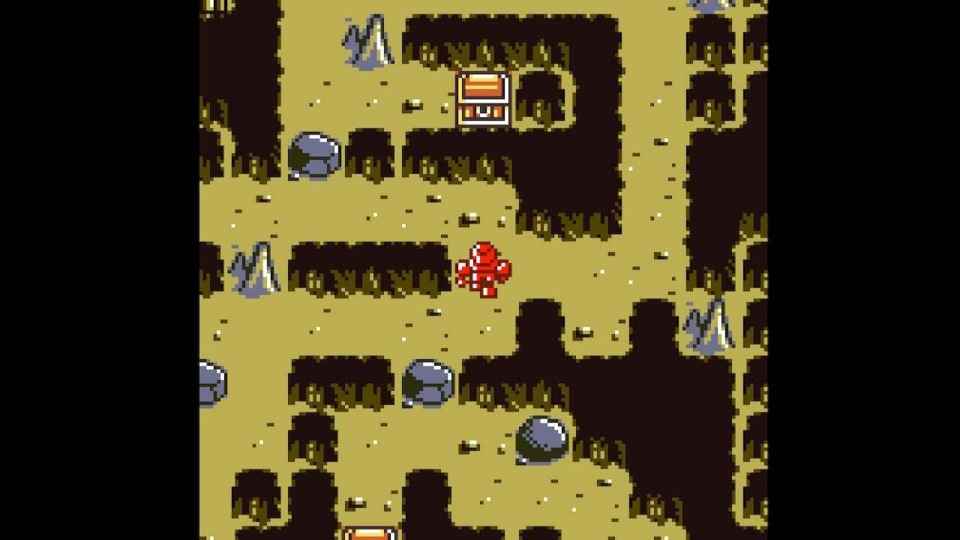
But the big thing I can predict some of you pushing back on involves the game's dungeons. If you do not like the idea of procedurally generated and randomized dungeons, this game is likely not for you. Every time you exit a dungeon, it will reset and provide a different floorplan with different treasure chest placements than your previous exploratory effort. The dungeons also speak to an era of CRPG and JRPG level design where you likely could piss straighter lines in the snow than the routes you walk in Biomotor Unitron. The camera, which you have no control over, is honestly too zoomed in for you to get a good gauge of where corners or exits are, and with things being randomized, circling to find exits takes way more work than it should. That's doubly the case when you get near the end of the game, and the objective becomes "Just get to the bottom." The random encounter rate also increases as you progress into the dungeons, which certainly does not help. And you end up spending a disproportionate amount of your time in these dungeons because they are not proccing the one thing you need or want when you enter them, even when it employs random encounters every three paces.
Hey, This Game Is On Switch & Steam, And So Are A Ton Of Great Neo Geo Pocket Color Games!

Again, my big takeaway from playing Biomotor Unitron was my innate nostalgia for "classic" handheld gaming. There was something about my ability to play Biomotor Unitron for two days and then take a break from it for three and jump back into it without needing to read up on a refresher course that I genuinely loved. The game speaks to the uniqueness of portable gaming. During this period, and for two decades more, handheld gaming development outfits knew that they had to design games that used limited resources and needed to be playable in short bursts. Biomotor Unitron leans into this even further by fully embracing an up-tempo structure that constantly has you thinking about how to move forward. Taking the heart of Pokémon and classic CRPGs and stewing them into a ten to fifteen-hour experience is the game's true stroke of genius. If I had this game to keep me busy during my elementary days or during long and lazy Summer Breaks, I would have loved it even more.
If you share my nostalgia for those relaxed bygone years, consider this: Biomotor Unitron is relatively easy to come by these days! In fact, the best titles on the Neo Geo Pocket Color are shockingly well-supported on the Nintendo Switch and Steam! The revitalized SNK has spearheaded a new emulation effort called "Neo Geo Pocket Color Selection," which takes a note from Sega's Genesis Collection. There are two "seasons" to buy, and the first one provides the notable fighting games and Metal Slug titles on the handheld. The second gives you arcade sports games, Biomotor Unitron, SNK v Capcom Card Fighters Clash, and the Mega Man fighting game I mentioned during the introduction! The second volume has a lot of variety for those of you, like me, who might not be colossal fighting game fans. All of these games are lovingly emulated, play at excellent framerates, and, most importantly, take handheld games and adapt them for modern monitors or hardware so they do not look like pixelated nightmares. The asking price of $40 for each package or season is steep, but at least you can buy Biomotor Unitron as a standalone game on the Switch for $8.
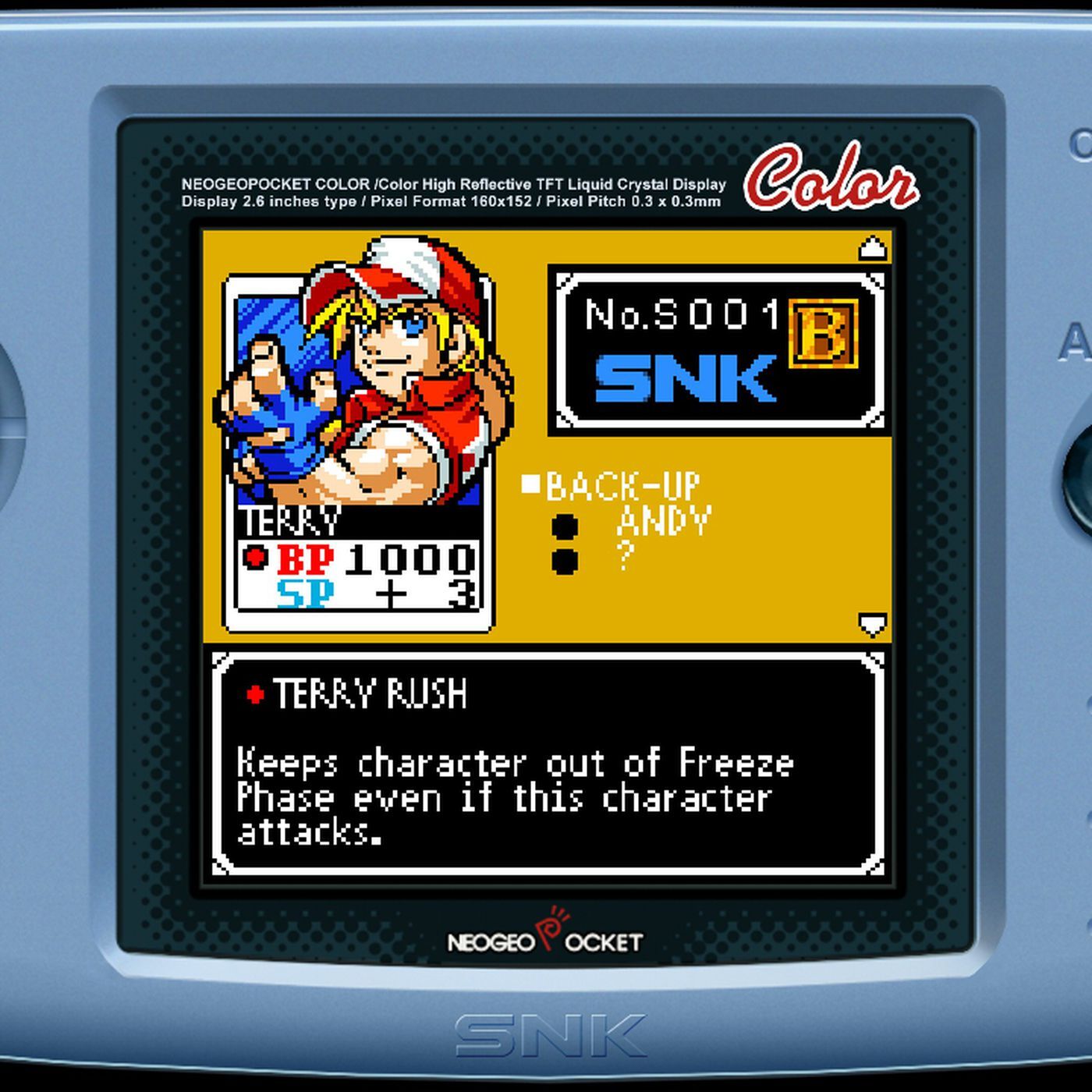
Absent in this collection is Biomotor Unitron's sequel, which never saw a proper Western release as the Neo Geo Pocket Color's international support was discontinued before its release in Japan. I have checked Kikou Seiki Unitron's fan translation fairly regularly over the past few months and have been disappointed to discover it has likely been abandoned in a partial state. While shop menus and battle screens remain completely localized, the game's dialogue, item descriptions, fighting prompts, and weapon bios are 50% translated or less. This problem is undeniably disappointing, as Kikou Seiki Unitron sounds like an improvement over the first game in every regard. The sequel, to the best of my knowledge, has even more weapon variety and enemy types, a far more in-depth story and cast of characters, as well as better attack animations for your mech and foes. Maybe in the coming years, things will change, and SNK's non-fighting game projects and efforts will begin to get their due, but I'm not holding my breath.
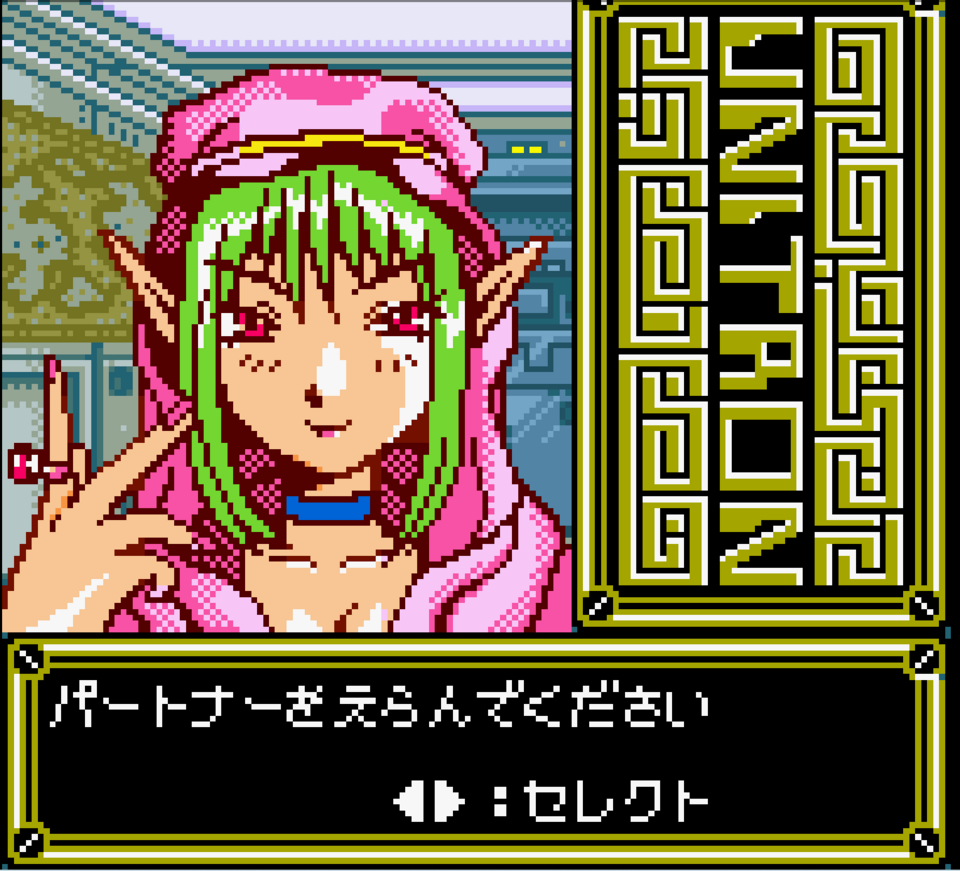
Also, it would behoove me not to mention that Mohammed bin Salman currently funds and practically owns SNK. He is an authoritarian who murders dissident journalists, ordered a crackdown on feminist protests in his own nation, and is the architect of Saudi Arabia's military intervention in Yemen, which has caused a famine resulting in the deaths of tens of thousands of innocent civilians.
